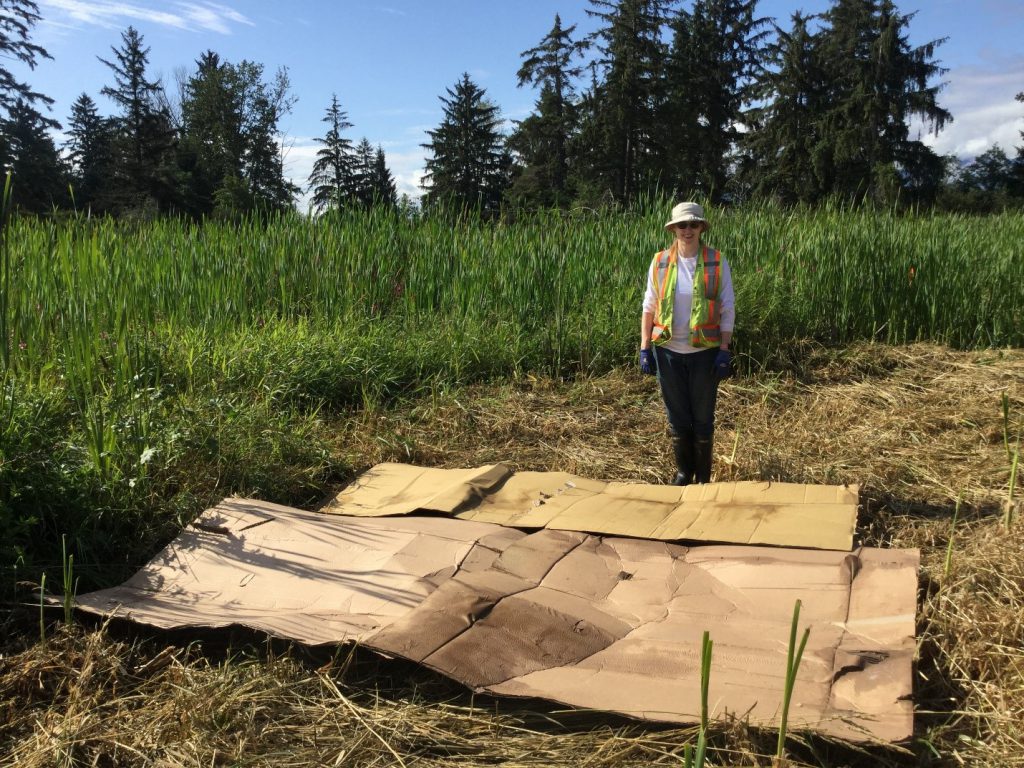Reed canary grass removal in the K’ómoks Estuary
Invasive reed canary grass is an introduced species spreading within the Courtenay River (K’ómoks) Estuary, especially in Hollyhock Marsh and Mallard Creek. This invasive grass out-competes native plant species, provides little value for native wildlife, grows too thickly for mammals or waterfowl to use for cover/nesting, reduces foraging and feeding opportunities for juvenile salmonids, and impedes salmon from reaching spawning habitats. This project will inventory, map, and work on removing and controlling this invasive grass to restore more natural habitat conditions for fish and wildlife.
Update: 1,200 m2 in the K’ómoks Estuary treated for invasive reed canary grass
Three priority areas in the K’ómoks Estuary, totalling 1,200 m2, have been treated for reed canary grass. Spread of the invasive plant in the estuary has tripled since 2004, so this project by the Comox Valley Project Watershed Society aims to not only treat target areas but also test for the most effective treatment methods.
Seven different treatments were used in the Hollyhock Marsh Conservation Area, Dyke Slough, and the lower reaches of Mallard Creek. The Comox Valley Project Watershed Society will monitor the sites to figure out which methods have the most impact.

Final report: executive summary
This report outlines the Comox Valley Project Watershed Society’s (CVPWS) efforts to control and manage the spread of invasive reed canary grass (RCG) in the K’ómoks Estuary in the spring, summer, and fall of 2019. This work aligned with the Fish and Wildlife Compensation Program’s priority action “to implement habitat-based actions in the K’ómoks Estuary as per the CVPWS restoration plan – P1.” The restoration plan P1 indicates a need for in-stream habitat enhancement projects in Mallard Creek.
During the spring of 2019, the CVPWS inventoried and mapped the extent of RCG in three priority areas in the K’ómoks Estuary: Hollyhock Marsh Conservation Area, Dyke Slough, and the lower reaches of Mallard Creek. Specific regions within these areas were then targeted for eradication trials. The following seven treatments were trialled: mowing; mowing and shading; mowing and mulching; mowing, mulching, and shading; manual excavation; machine excavation; and machine excavation and live staking with native species. Overall, approximately 1200 2 of RCG was removed and treated across all treatment trials.
Click the provincial database link below to read the full final report for this project.


